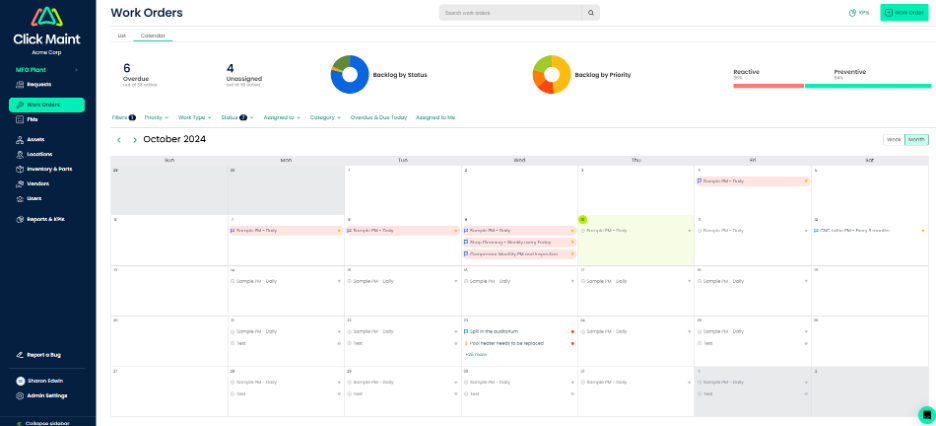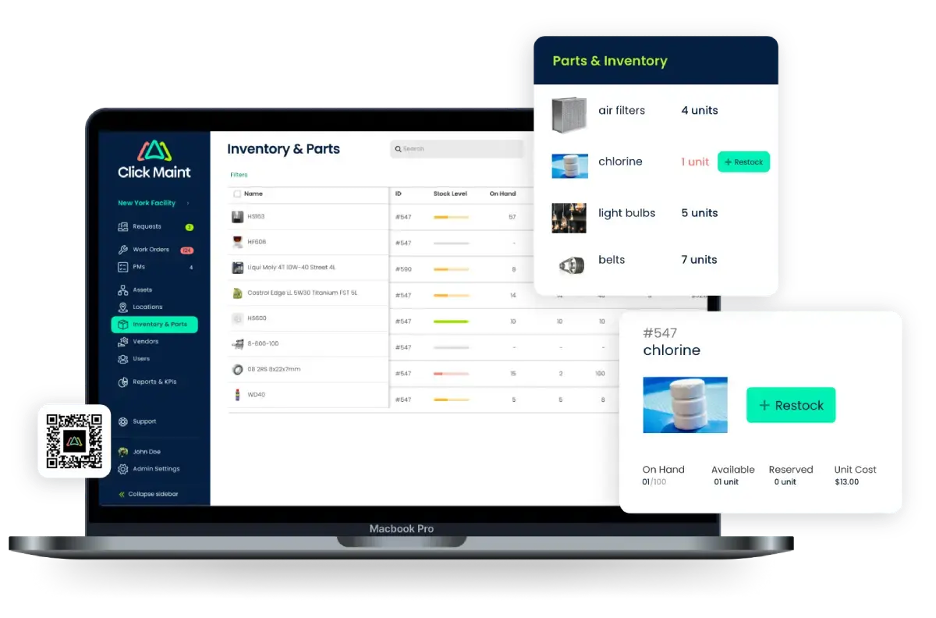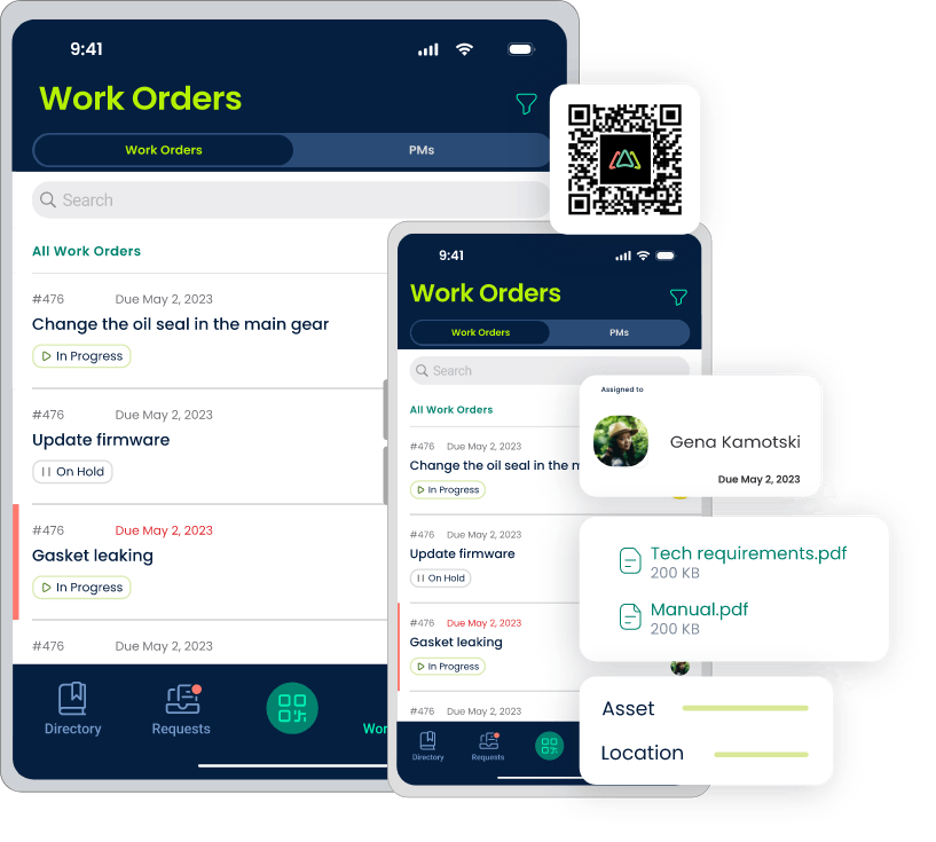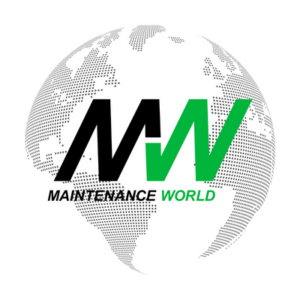How to Create a Corrective Maintenance Work Order
Reena Sommer, Ph.D. for Click Maint CMMS
Posted 10/15/2024
Corrective maintenance is key for any business that relies on machinery and equipment. Without it, unexpected breakdowns can lead to costly downtime, reduced productivity, and significant losses. By addressing issues quickly and effectively, you can extend the lifespan of your assets and ensure smoother operations. In industries where every minute counts, having a reliable corrective maintenance process can make all the difference.
A corrective maintenance work order is a structured document that details the specific repair or maintenance task needed to restore equipment to working condition. This article will walk you through the key aspects of a corrective maintenance work order, highlighting the essential information required, the process of assigning tasks, and how to ensure repairs are carried out efficiently. By creating a well-organized corrective maintenance work order, businesses can streamline their repair process, reduce the chances of prolonged downtime, and improve overall equipment reliability.
Understanding Corrective Maintenance Work Order
A work order is a formal record that outlines all the details of maintenance tasks and the process for completing them. Corrective maintenance involves restoring failed equipment or systems to operational condition within defined limits. Unlike preventive maintenance, which aims to avoid breakdowns, corrective maintenance is reactive, addressing issues that arise unexpectedly. For instance, in a manufacturing environment, if a conveyor belt shows signs of wear during an inspection, a corrective maintenance work order is issued to replace or repair the belt before it fails.Understanding Corrective Maintenance Work Order
A work order is a formal record that outlines all the details of maintenance tasks and the process for completing them. Corrective maintenance involves restoring failed equipment or systems to operational condition within defined limits. Unlike preventive maintenance, which aims to avoid breakdowns, corrective maintenance is reactive, addressing issues that arise unexpectedly. For instance, in a manufacturing environment, if a conveyor belt shows signs of wear during an inspection, a corrective maintenance work order is issued to replace or repair the belt before it fails.

What is a Corrective Maintenance Work Order?
A corrective maintenance work order is a structured document designed to guide the process of fixing or replacing equipment or parts that have encountered issues. It plays a vital role in ensuring that equipment failures are addressed before they lead to major disruptions, distinguishing it from emergency work orders, which are reactive and initiated after an asset has already failed.
The Importance of the Work Order in Corrective Maintenance
By using corrective maintenance work orders, organizations can ensure that repairs are handled efficiently, downtime is minimized, and equipment reliability is maintained. This structured approach also contributes to better maintenance records, aiding in future troubleshooting and compliance while enabling data-driven decisions that prolong asset life.

Key Components of a Corrective Maintenance Work Order
A well-structured maintenance work order is critical for ensuring that corrective maintenance tasks are completed efficiently and accurately. By including key details, maintenance teams can streamline the repair process, reduce downtime, and improve overall equipment performance. Below are the essential components of a corrective maintenance work order.
Asset Information
The work order should clearly identify the equipment in need of repair. This includes the machine’s name, its location within the facility, and its unique ID or serial number. Accurate asset information ensures that the maintenance team knows exactly which equipment to address and can quickly locate it.

Problem Description
A detailed description of the issue is vital. This should cover the symptoms (e.g., unusual noises, overheating) and the failure mode (e.g., electrical failure, mechanical breakdown). Providing specific details helps the assigned personnel diagnose the problem accurately and determine the best course of action.
Priority Level
Determining the urgency of the repair is key to effective maintenance scheduling. Work orders should indicate whether the issue is urgent, high, medium, or low priority. Urgent and high-priority tasks require immediate attention to prevent operational delays, while lower-priority tasks can be scheduled around other ongoing work.
Assigned Personnel
The work order should specify the technician or team responsible for the repair. Assigning the task to the right personnel ensures that someone with the appropriate expertise and availability handles the job.
Required Parts and Tools
Listing the necessary parts and tools for the repair is vital. An inventory check should be conducted to ensure that everything needed is available. This prevents delays that can arise when parts must be ordered, or tools are unavailable.
Estimated Time for Completion
An estimated time for completing the repair provides a guideline for scheduling and helps maintenance teams prioritize tasks effectively. It also assists in setting expectations for when the equipment will be back in service.

Approval/Sign-Off Process
Finally, a formal approval or sign-off process ensures that the work order has been reviewed and authorized before execution. This step is essential for accountability and for keeping track of completed maintenance tasks.
By including these components, businesses can ensure that their corrective maintenance work orders are thorough, clear, and efficient, leading to faster repairs and improved equipment performance.
Step-by-Step Guide to Creating a Corrective Maintenance Work Order
Creating a maintenance work order is essential for efficient corrective maintenance. Follow this step-by-step guide to ensure a smooth process.
Step 1: Identify the Problem
Begin by gathering information about the equipment issue. Conduct inspections, review maintenance reports, and collect operator notes to understand the symptoms and nature of the problem. Engaging with operators can provide valuable insights into the equipment’s behavior.
Step 2: Record Detailed Information
Accurate documentation is vital. Record a detailed description of the problem, including any relevant history. Ensure that asset information, such as the machine name, location, and ID, is correctly noted. This clarity aids technicians in diagnosing the issue effectively.
Step 3: Assign Responsibility
Select the right personnel or team for the repair based on their expertise and availability. Ensuring that qualified individuals are assigned helps improve repair quality and reduces the risk of further issues.
Step 4: List Necessary Resources
Identify and list all necessary parts, tools, and documentation required for the repair. Checking inventory beforehand prevents delays caused by unavailable resources and allows for smoother execution.
Step 5: Prioritize the Work Order
Categorize the urgency of the task to prevent production delays. Assign priority levels such as urgent, high, medium, or low, ensuring that critical issues are addressed promptly to minimize downtime.
Step 6: Submit for Approval
Submitting the work order for approval is important, especially for major repairs or high-priority issues. Approval ensures that the required budget and resources are allocated before work begins.
Step 7: Track Progress and Completion
Finally, monitor the progress of the work order to ensure timely execution. Regular follow-ups and updates help maintain accountability and ensure that repairs are completed efficiently. Once the task is finished, document the outcomes and any lessons learned to improve future maintenance practices.
By following these steps, you can effectively create a maintenance work order that enhances your corrective maintenance processes and ensures operational reliability.
Best Practices for Managing Corrective Maintenance Work Orders
Effectively managing corrective maintenance work orders is essential for minimizing downtime and maximizing equipment reliability. One of the best practices is to utilize a Computerized Maintenance Management System (CMMS). These digital tools streamline the work order process by automating tasks such as scheduling, tracking, and reporting. With CMMS software, maintenance teams can quickly access historical data, ensuring that repairs are executed efficiently and with the right resources.
Consistency in documentation is another key practice. Maintaining clear and accurate records of all maintenance activities allows organizations to analyze trends over time, facilitating informed decision-making. Consistent documentation helps identify recurring issues and can serve as a valuable reference for future maintenance tasks.
Additionally, integrating preventive measures is vital. By analyzing the data gathered from corrective maintenance tasks, organizations can uncover root causes and implement strategies to prevent similar issues from arising in the future. This proactive approach not only enhances the longevity of assets but also reduces the frequency of unexpected breakdowns, leading to a more efficient and reliable operational environment. By following these best practices, organizations can significantly improve their corrective maintenance processes and drive better overall performance.
Common Mistakes to Avoid When Creating a Work Order
Creating an effective maintenance work order is essential for successful corrective maintenance. However, several common mistakes can hinder the process:
1. Incomplete Information
Providing incomplete information is a major issue. Missing critical details about the problem or equipment can lead to confusion and delays in repairs. Ensure all relevant information, such as symptoms, asset identification, and specifics of the failure, is included.
2. Poor Prioritization
Failing to assess the urgency of the task properly can result in critical issues being overlooked or addressed too late, leading to increased downtime and operational disruptions. Clear prioritization based on the severity of the issue helps ensure that the most urgent tasks are handled promptly.
3. Not Involving the Right Personnel
Assigning repairs to the wrong team can impede the repair process. It’s vital to match tasks with the appropriate expertise to ensure efficient and effective resolutions.
4. Neglecting Follow-Up and Tracking
Failing to follow up and track work orders can result in unresolved issues and a lack of accountability. Regularly monitoring the progress of work orders ensures timely repairs and helps identify patterns that may require attention.
By avoiding these mistakes, organizations can significantly improve the effectiveness of their maintenance operations.
Conclusion – Creating a Corrective Maintenance Work Order
Creating an effective corrective maintenance work order involves including critical information such as asset details, problem descriptions, prioritization, and assigned personnel. By adhering to best practices and avoiding common mistakes, organizations can streamline their maintenance processes and minimize downtime. To enhance efficiency further, consider implementing a structured work order process or adopting maintenance management software. This approach not only simplifies the management of corrective maintenance but also ensures that all tasks are completed accurately and promptly. Start prioritizing your maintenance work orders today for a more reliable operational environment.
References
https://www.ibm.com/topics/work-order
https://www.clickmaint.com/work-order
https://ijaers.com/uploads/issue_files/10%20IJAERS-MAY-2018-10-The.pdf
https://en.wikipedia.org/wiki/Corrective_maintenance

Reena Sommer
Reena Sommer has written extensively about CMMS and maintenance management best practices since 2018. Reena has been a contributor for Hippo CMMS, Click Maint among others. She has her Ph.D. in Psychology from the University of Manitoba. Reena hails from Winnipeg, Canada and currently resides in Chicago, Illinois, USA.
Related Articles

Too Small for a CMMS? Think Again

The Role of Information Technology in Plant Reliability

The Future of CMMS





